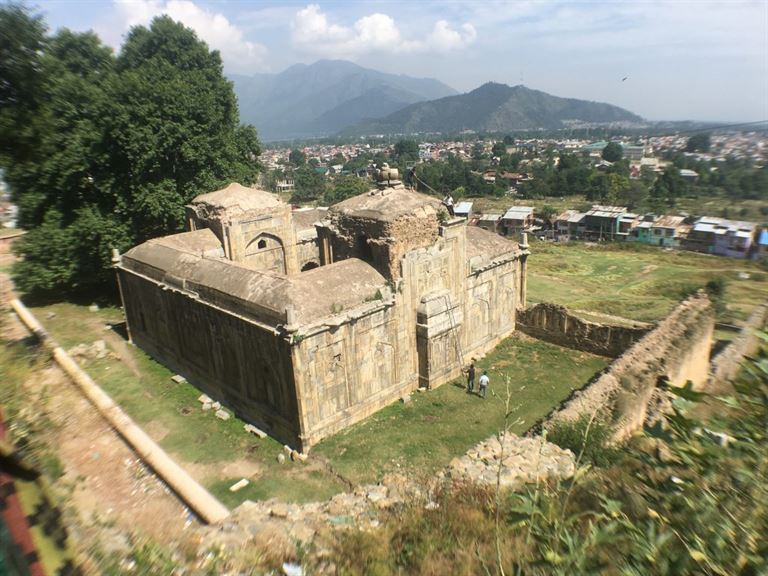
A prince was in search of a Sufi master to help him on his mystical journey into the world of tassawuf (mysticism). He finally found one in Mian Mir (1550-1635), the Qadriya saint, someone who had impressed his grandfather Emperor Jahangir. The young prince, Dara Shukoh (1615-1659), came in touch with Mian Mir, but before he could become his disciple the saint passed away.
In 1639, the young prince set off on a journey to Kashmir, where Mian Mir’s successor Shah Muhammad, popularly known as Mullah Shah Badakshi or Akhund Shah, lived. Mullah Shah was known for his secular approach and that must have influenced Dara. Though earlier Mullah Shah only spent summers in Kashmir after Mian Mir’s death, he settled in Srinagar, residing in a small cell in the mountain famous as Hari Parbat or Koh-e-Maran. His meditation was in darkness.
It was here that Dara visited him one night. Professor Fatima Zehra Bilgrami writes in History of the Qadiri Order in India that when Mullah Shah saw the prince he asked for a lamp to be lit and recited the following verse:
Nai Chiragheist Darin Khana-i Virana-i Ma
Roshan az Aatish-i Ishq-i Tu-Shudah Khana-i Ma
(In this desolate cell of ours we do not have a candle
As the fire of your Love illuminates our abode.)
Dara requested Mullah Shah that “they want to come to his halqa (circle), and they helped him in all possible ways and built a khanqah and a house for him,” writes Prof. Bilgrami. His sister Princess Jahanara Begum, who was following him, also became Mullah Shah’s disciple.
Dara built a mosque known today as Akhund Shah’s masjid on a scarp in Hari Parbat. I recently visited this once-famed mosque, now in a partially ruinous condition. From Makhdoom Sahib’s dargah on a higher spot on Hari Parbat, I could see the remnants of a few petals of the lotus finial, which is supposed to be the only one on a mosque in Kashmir. Fortunately, I could see that repairs are currently under way by the Archaeological Survey of India.
It’s in a large rectangular enclosure with a tank for ablutions, surrounded by apartments for devotees and servants. The mosque itself is a simple and elegant building of grey granite slabs over brickwork, much of which is now exposed. On the entrance of the mosque, I found these lines which have been translated by Ajmal Siddiqi from Persian.
Waman dakhalahu kaana aamina whoever enters it shall be safe
(These lines are from the Koran for Ka’ba in Mecca)
The second line reads:
wallahu mufattihul abwaab
(Allah is the opener of doors)
While Mullah Shah remained safe from the wrath of Aurangzeb and died a natural death in 1661 in Lahore, Dara was executed by Aurangzeb after the latter won the war of succession.
This mosque must have been quite a huge complex, as seen from the ruins of the cells for devotees and visitors, the remnants of the hammam, and the stones. But in its time it must have been beautiful with two fountains: Chashma-i-Shahiyah and Chashma-i-Sahibiyah. The latter was named by Mullah Shah in honour of Jahanara, the Begum Sahiba of the Mughal court.
More can be read in The Hind (AUGUST 06, 2017)

